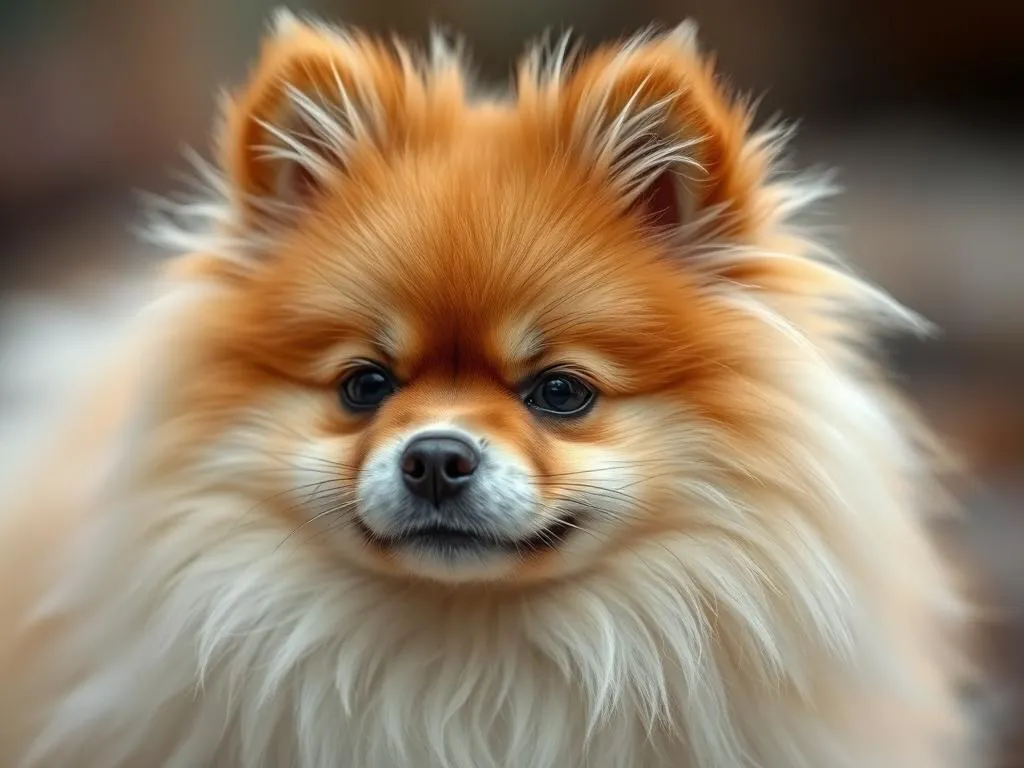
Introduction
Pomeranians, with their fluffy coats and lively personalities, have become one of the most popular toy breeds. These small dogs, known for their playful nature and charming looks, raise an essential question for families: will a Pomeranian be good with my kids? Understanding a breed’s characteristics, temperament, and needs is crucial when introducing a pet into a family with children. This article explores the suitability of Pomeranians for families with children, considering their unique traits and how they interact with young ones.
Understanding Pomeranians
Breed Characteristics
Pomeranians are small dogs typically weighing between 3 to 7 pounds and standing around 8 to 12 inches tall at the shoulder. Their distinctive double coat is fluffy and comes in various colors, including orange, black, cream, and blue. Grooming a Pomeranian is essential, as their long fur requires regular brushing to prevent matting and excessive shedding.
In terms of temperament, Pomeranians are known for being cheerful, curious, and intelligent. They often display a lively and playful demeanor, making them delightful companions. However, their bold personalities can sometimes lead them to be assertive, particularly when they feel threatened.
History and Origin
The Pomeranian breed descends from larger Spitz-type dogs that were found in the Arctic regions. The breed was named after the Pomerania region of northern Europe, where the dogs were bred down in size. Over time, Pomeranians gained popularity, particularly among European royalty, leading to their current status as a beloved toy breed.
Common Health Issues
While Pomeranians are generally healthy, they can be prone to specific health issues such as dental problems, patellar luxation, and heart conditions. Regular vet check-ups are vital to ensure they remain healthy, especially in a family setting where children may inadvertently cause injuries.
Pomeranians and Children: Compatibility
General Temperament with Kids
When considering if a Pomeranian will be good with my kids, it’s important to understand their general temperament around children. Pomeranians can be very playful and affectionate, often forming strong bonds with the family. They enjoy interactive play, which can include games like fetch or simple tug-of-war. However, their playful nature can also lead to overexcitement, which might intimidate younger or more timid children.
Size Considerations
The small size of Pomeranians can be both an advantage and a disadvantage when it comes to interactions with kids. On one hand, their compact size makes them manageable for children to hold and play with. On the other hand, this small stature makes them vulnerable to rough play. It’s crucial to supervise interactions, especially with younger children who may not yet understand how to handle a dog gently.
Socialization and Training
Early socialization is critical for Pomeranians to develop good manners around children. Introducing them to various experiences, sounds, and people can help them become well-rounded dogs. Training is equally important; teaching commands such as “gentle” and “leave it” can prevent potential issues during playtime. Consistent training helps reinforce positive behavior, making Pomeranians more suitable for family life.
Factors to Consider Before Getting a Pomeranian
Family Dynamics
Before bringing a Pomeranian into your home, assess your family dynamics. Consider your child’s age and temperament. Younger children may not yet have the ability to interact responsibly with a small dog, which can lead to accidental injuries. It’s essential to ensure that your child can understand boundaries and respect the dog’s space.
Lifestyle Considerations
Pomeranians require daily exercise and mental stimulation. Their energetic nature means they thrive in active households. If your family has a busy lifestyle, consider whether you can meet the activity needs of a Pomeranian. Daily walks, playtime, and interactive toys are necessary to keep them happy and healthy.
Home Environment
The environment in which a Pomeranian will live is also crucial. These dogs adapt well to smaller living spaces, such as apartments, but need safe areas to play and explore. Childproofing your home is essential to ensure the safety of both the dog and the children. Remove any small objects or toxic plants that could pose a risk to a curious Pomeranian.
Tips for Introducing a Pomeranian to Kids
Preparation Steps
Before introducing a Pomeranian to your children, prepare both the dog and the kids. Teach children how to approach and interact with a new dog gently. Explain the importance of being calm and respectful, avoiding sudden movements or loud noises that could startle the dog. Setting clear boundaries for interactions is also vital to ensure a safe and enjoyable experience for both parties.
The Introduction Process
The introduction process should be gradual. Start by allowing the dog to explore the room while children maintain a safe distance. Once the Pomeranian seems comfortable, let the children approach slowly, rewarding the dog with treats for calm behavior. Always supervise this initial interaction, ensuring that both the dog and the children are at ease.
Ongoing Training and Supervision
Training should not stop after the initial introduction. Continuous reinforcement of good behavior is necessary as the dog grows. Supervise all interactions between the Pomeranian and the children, especially as the dog may become more assertive with age. Recognizing signs of stress or discomfort in the dog can help prevent potential issues.
Alternatives to Pomeranians for Families
Other Dog Breeds Suitable for Kids
If you decide that a Pomeranian might not be the best fit for your family, there are several other dog breeds that are generally known to be good with children. Here are a few options:
- Cavalier King Charles Spaniel: Affectionate and friendly, these dogs are great companions for children and adapt well to family life.
- Beagle: Energetic and playful, Beagles love to be around kids and enjoy outdoor play.
- Shih Tzu: Known for their gentle disposition, Shih Tzus can be excellent companions for children who understand how to interact softly.
Rescue and Adoption Considerations
Considering rescue dogs can be a rewarding option. Many rescue organizations evaluate the temperament of their dogs, making it easier to find a suitable match for families with kids. When looking for a rescue dog, assess the dog’s history, behavior around children, and overall compatibility with your family.
Conclusion
In conclusion, Pomeranians can be great companions for families with children, provided that the necessary precautions are taken. Their playful and affectionate nature often blends well with family dynamics, but it’s crucial to consider factors such as the child’s age, lifestyle, and home environment. With proper training, socialization, and supervision, a Pomeranian can thrive in a household and foster a loving bond with kids.
As you contemplate whether a Pomeranian will be good with my kids, remember to weigh all factors carefully. Each dog is unique, and ensuring that both your family and the dog will be happy together is paramount.
FAQs
Are Pomeranians hypoallergenic?
Pomeranians are not considered hypoallergenic. They produce dander and shed fur, which may trigger allergies in sensitive individuals.
How much exercise do Pomeranians need?
Pomeranians require around 30 minutes to an hour of exercise daily. This can include walks, playtime, and mental stimulation activities.
What is the average lifespan of a Pomeranian?
The average lifespan of a Pomeranian is between 12 to 16 years, although some can live longer with proper care.
How do I teach my Pomeranian to be gentle with kids?
Teaching your Pomeranian to be gentle involves consistent training and positive reinforcement. Use commands like “gentle” and reward calm behaviors around children.
Can Pomeranians be left alone with children?
While Pomeranians can be left alone with older children who understand how to interact with dogs, it’s essential to supervise interactions with younger kids to prevent accidents.









